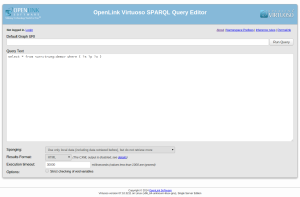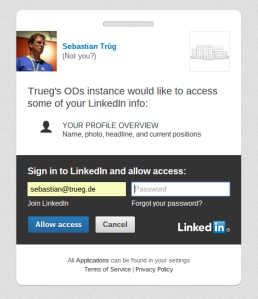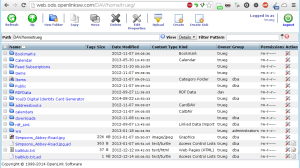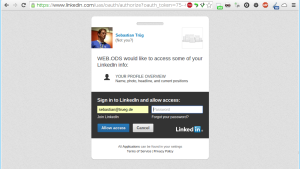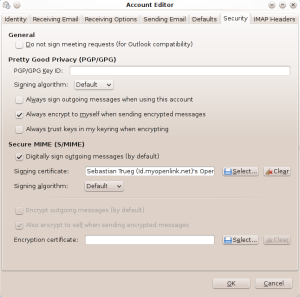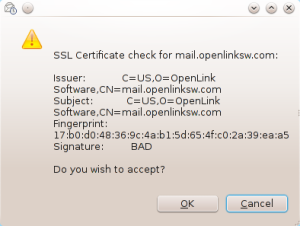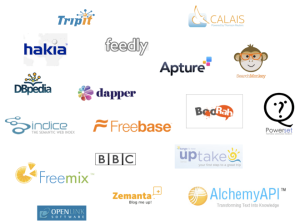
Just few days ago the popular ReadWriteWeb published a list of the
2009 Top Ten Semantic Web products as they did one year ago
with the
2008 Top Ten.
This two milestones are a good opportunity to make
something similar to a balance. Or just to do a quick
overview on what’s changed in the “Web of Data”, only one
year later.
The 2008 Top Ten foreseen the following applications, listed in
the same ReadWriteWeb order and enriched with some personal
opinions.
Yahoo Search Monkey
It’s great. Search Monkey
represents the first kind of next-generation search engines due its
capability to be fully customized by third party developers.
Recently, a breaking
news woke up the “sem webbers” of the whole planet:
Yahoo started to show structured data exposed with RDFa in the
search results page. That news bounced all over the Web and those
interested in SEO started to appreciate Semantic Web technologies
for their business. But, unfortunately, at the moment I’m
writing, RDFa is not showed anymore on search results due to an
layout update that broke this functionality. Even if there
are rumors on a imminent fixing of this, the main problem is the
robustness and the reliability of that kind of services: investors
need to be properly guaranteed on the effectiveness of their
investments.
Powerset
Probably, this neat application has became really popular when
it has been acquired by Microsoft. It allows to make simple natural
language queries like “film where Kevin Spacey acted” and,
a first glance, the results seems really much better than other
traditional search engines. Honestly I don’t really know what are
the technologies they are using to do this magic. But, it
would be nice to compare their results with an hypothetical service
that translates such human text queries in a set of SPARQL queries
over DBpedia. Anyone interested in do that? I’ll be more
than happy to be engaged in a project like that.
Open Calais
With a large and massive branding operation these guys built the
image of this service as it be the only one fitting everyone’s need
when dealing with semantic enrichment of unstructured free-texts.
Even this is partly true (why don’t mentioning the
Apache UIMA Open Calais annotator?), there are a lot of other
interesting services that are, for certain aspects, more intriguing
than the Reuters one. Don’t believe me? Let’s give a try to
AlchemyAPI.
Dapper
I have to admit my ignorance here. I never heard about it, but
it looks very very interesting. Certainly this service that offers,
mainly, some sort of semantic advertisement is more than promising.
I’ll keep an eye on it.
Hakia
Down at the moment I’m writing. 
Tripit
Many friends of mine are using it and this could be enough to
give it popularity. Again, I don’t know if they are using some of
the W3C Semantic Web technologies to models their data. RDF or not,
this is a neat example of semantic web application with a good
potential: is this enough to you?
BooRah
Another case of personal ignorance. This magic is, mainly, a
restaurant review site. BooRah uses semantic analysis and natural
language processing to aggregate reviews from food blogs. Because
of this, BooRah can recognize praise and criticism in these reviews
and then rates restaurants accordingly to them. One criticism? The
underlying data are perhaps not so much rich. Sounds impossible to
me that searching for “Pizza in Italy” returns
nothing.
Blue Organizer (or GetGlue?)
It’s not a secret that I consider Glue one of the most
innovative and intriguing stuff on the Web. And when it
appeared on the ReadWriteWeb 10 Top Semantic Web applications was
far away from what is now. Just one year later, GetGlue (Blue
Organizer seems to be the former name) appears as a growing and
live community of people that realized how is important to wave the
Web with the aim of a tool that act as a content cross-recommender.
Moreover GetGlue provides a neat set of Web APIs that I’m widely
using within the NoTube project.
Zemanta
A clear idea, a powerful branding and a well designed set of
services accessible with Web APIs make Zemanta one of the most
successful product on the stage. Do I have to say anything more? If
you like Zemanta I suggest you to keep an eye also on Loomp, a nice
stuff presented at the European Semantic Technology Conference
2009.
UpTake.com
Mainly, a semantic search engine over a huge database containing
more than 400,000 hotels in the US. Where’s the semantic there?
Uptake.com crawls and semantically extracts the information
implicitly hidden in those records. A good example of how
innovative technologies could be applied to well-know application
domains as the hotels searching one.
On year later…
Indubitably, 2009 has been ruled by the Linked Data Initiative,
as I love to call it. Officially Linked Data is about “using
the Web to connect related data that wasn’t previously linked, or
using the Web to lower the barriers to linking data currently
linked using other methods” and, if we look to its growing rate, could be
simple to bet on it success.
Here is the the 2009 top-ten where I omitted GetGlue, Zemanta
and OpenCalais since they already appeared also in the 2008
edition:
Google Search Options and Rich Snippets
When this new feature of Google has been announced the whole
Semantic Web community realized that something very powerful
started to move along. Google Rich Snippet makes use of the RDFa
contained in the HTML Web pages to power rich snippets feature.
Feedly
It’s a very very nice feeds aggregator built upon Google Reader,
Twitter and FriendFeed. It’s easy to use, nice and really useful
(well, at least it seems so to me) but, unfortunately, I cannot see
where is the Semantic aspects here.
Apture
This JavaScript cool stuff allows publishers to add contextual
information to links via pop-ups which display when users hover
over or click on them. Watching HTML pages built with the aid of
this tool, Apture closely remembers me the WordPress Snap-Shot plugin.
But Apture seems richer than Snap-Shot since it allows the
publishers to directly add links and other stuff they want to
display when the pages are rendered.
BBC Semantic Music Project
Built upon Musicbrainz.org (one of the most representative
Linked Data cloud) it’s a very remarkable initiative. Personally,
I’m using it within the NoTube project to disambiguate Last.fm
bands. Concretely, given a certain Last.fm band identifier, I make
a query to the BBC /music that returns me a URI. With this URI I
ask the sameas.org service to give
me other URIs referring to the same band. In this way I can
associate to every Last.fm bands a set of Linked Data URIs where
obtain a full flavor of coherent data about them.
Freebase
It’s an open, semantically marked up shared database powered by
Metaweb.com a great company
based in San Francisco. Its popularity is growing fast, as
ReadWriteWeb already noticed. Somehow similar to Wikipedia,
Freebase provides all the mechanisms necessary to syndicate
its data in a machine-readable form. Mainly, with RDF.
Moreover, other Linked Data clouds started to add owl:sameAs links
to Freebase: do I have to add something else?
Dbpedia
DBpedia is the nucleus of the Web of
Data. The only thing I’d like to add is: it deserves to be on
the ReadWriteWeb 2009 top-ten more than the others.
Data.gov
It’s a remarkable US government initiative to “increase
public access to high value, machine readable datasets generated by
the Executive Branch of the Federal Government.”. It’s a start
and I dream to see something like this even here in Italy.
So what’s up in the end?
It’s my opinion that the 2009 has been the year of
Linked Data. New clouds born every month, new links between the
already existent ones are established and a new breed of developers
are being aware of the potential and the threats of Linked Data
consuming applications. It seems that the Web of Data is
finally taking shape even if something strange is still in the air.
First of all, if we give a closer look to the ReadWriteWeb 2009 Top
Ten I have to underline that 3 products on 10 already were also in
the 2008 chart. Maybe the popular blog liked to stress on the
progresses that these products made but it sound a bit strange to
me that they forgot nice products such as the FreeMix, Alchemy API, Sindice, OpenLink Virtuoso and the
BestBuy.com usage of
GoodRelations ontology. Secondly, 3 products listed in the 2009
chart are public-funded initiatives that, even if is reasonable due
to the nature of the products, it leave me with the impression that
private investors are not in the loop yet.
What I expect from the 2010,
then?
A large and massive rush to using RDFa for SEO porpoises, a
sustained grow of Linked Data clouds and, I really hope,
the rise of a new application paradigm grounded to the
consumption of such interlinked data.
 since 2005.
since 2005.




